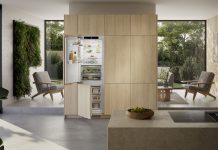Among the latest proposals of Samsung Electronics Air Conditioner Europe for the HVAC+R sector are the new ClimateHub units, an integrated solution that includes the hydronic module, a 200 liter storage tank and the main hydraulic components for a single internal unit which, combined with an external unit of the Samsung EHS heat pump range, is capable of providing heating, cooling and the production of domestic hot water. A further novelty are the new hydronic module units, a split, hydronic or direct expansion solution that contains the main hydraulic components capable of providing heating, cooling and the production of domestic hot water, in combination with an external unit of the Samsung Eco Heating System heat pump range. Besides, the low temperature terminals can be considered the optimal choice for space heating given the width of the radiating surface but, thanks to the new high temperature solutions of the EHS units, the new ClimateHub and the new Hydronic Module can be also combined with terminals that require higher operating temperatures, such as radiators.

At MCE Samsung is also exhibiting a recent novelty, EHS Mono R290, a monobloc solution with R290 refrigerant for heating, cooling and the production of domestic hot water, designed for both renovations and new constructions. This unit can be easily combined with low or high temperature terminals and is available in sizes 5, 8, 12 and 16 kW and in two different versions: with integrated pump or without pump. Finally, DVM S Mini in R32 is ideal for small to medium-sized environments.
Numerous other solutions are shown by Samsung such as the WindFree technology. For the home, the flagship product is WindFree Elite: in addition to incorporating the WindFree technology, with 21,000 micro-holes on the front surface of the internal unit to diffuse fresh air while avoiding the direct air jet, it has an A+++/A+++ efficiency in cooling and heating mode. Furthermore, it can also be controlled remotely via the SmartThings app and can be managed with the SolarCell remote control which recharges with the exposure to direct light (natural or artificial).



